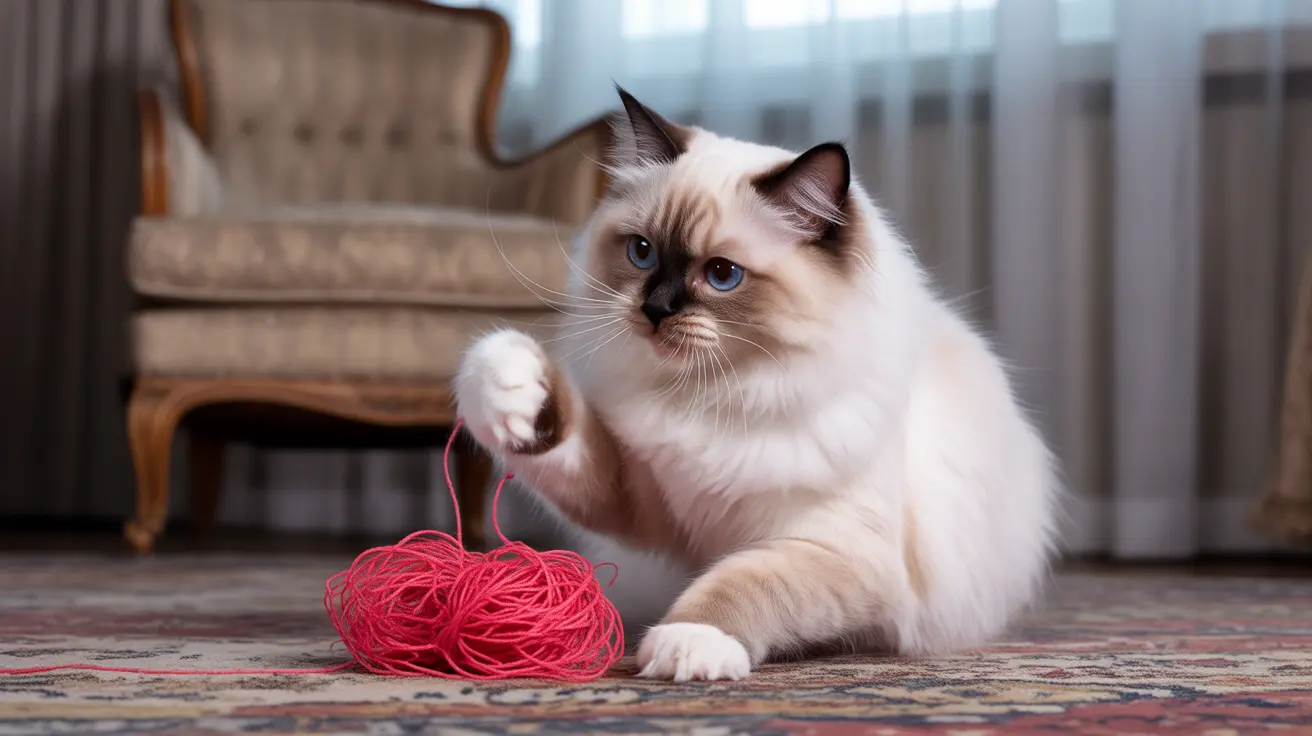If your cat has swallowed string, you're facing a potentially serious emergency that requires immediate veterinary attention. This comprehensive guide will help you understand the risks, recognize the symptoms, and know exactly what steps to take to protect your feline companion.
String ingestion in cats, medically known as linear foreign body ingestion, can lead to life-threatening complications if not addressed promptly. Understanding this condition and its consequences is crucial for every cat owner.
Why Cats Are Attracted to String
Cats have a natural predatory instinct that makes string-like objects irresistible. Their hunting reflexes are triggered by the movement and texture of items like yarn, thread, dental floss, and even holiday decorations like tinsel. This fascination, while normal, can lead to dangerous situations when cats move from playing to swallowing these items.
The Dangers of String Ingestion
When a cat swallows string, it can create a dangerous scenario called a linear foreign body obstruction. The string may become anchored around the tongue or in the stomach while the rest attempts to pass through the intestines. This can cause severe complications:
- Intestinal bunching or "plication"
- Tissue perforation
- Bacterial infection
- Complete digestive blockage
- Internal bleeding
Warning Signs Your Cat Has Swallowed String
Early detection is crucial for successful treatment. Watch for these symptoms:
- Repeated vomiting
- Loss of appetite
- Lethargy or depression
- Abdominal pain or swelling
- Difficulty defecating
- Visible string protruding from mouth or anus
- Excessive drooling
- Unusual meowing or vocal distress
Immediate Actions to Take
If you suspect your cat has swallowed string, follow these critical steps:
- Don't pull on any visible string
- Contact your veterinarian immediately
- Keep your cat calm and quiet
- Monitor vital signs and behavior
- Prepare for emergency transport if needed
Treatment Options and Recovery
Treatment varies based on the situation's severity. Options may include:
- Endoscopic removal
- Surgical intervention
- Supportive care with IV fluids
- Pain management
- Antibiotics if infection is present
Prevention Strategies
Protect your cat by implementing these preventive measures:
- Store string-like items securely
- Supervise play with string toys
- Dispose of damaged toys promptly
- Keep sewing supplies locked away
- Use cat-specific toys designed for safety
Frequently Asked Questions
What are the signs my cat has swallowed string and needs emergency veterinary care?
Watch for vomiting, lethargy, loss of appetite, abdominal pain, and visible string from either end. Any of these symptoms warrants immediate veterinary attention.
How dangerous is it if my cat swallows string, thread, or tinsel?
String ingestion is extremely dangerous and can be life-threatening. It can cause severe internal damage, including intestinal perforation, blockage, and potentially fatal complications if not treated promptly.
Should I try to pull the string out if I see it hanging from my cat's mouth or rear?
Never pull on visible string as it could be anchored internally. Pulling could cause severe internal damage. Instead, contact your veterinarian immediately for professional assistance.
What treatments will a vet use if my cat has ingested string?
Treatment depends on the situation but may include endoscopic removal, surgery, supportive care with IV fluids, pain management, and antibiotics. The vet will determine the best approach based on imaging and examination results.
How can I prevent my cat from swallowing string or similar objects at home?
Keep all string-like objects (yarn, thread, dental floss, tinsel) safely stored away. Use only cat-specific toys, supervise playtime, and immediately dispose of damaged toys that could unravel.
Remember, prevention is always better than treatment. Keep your home free of dangerous string-like objects and ensure your cat has plenty of safe, appropriate toys for entertainment.






